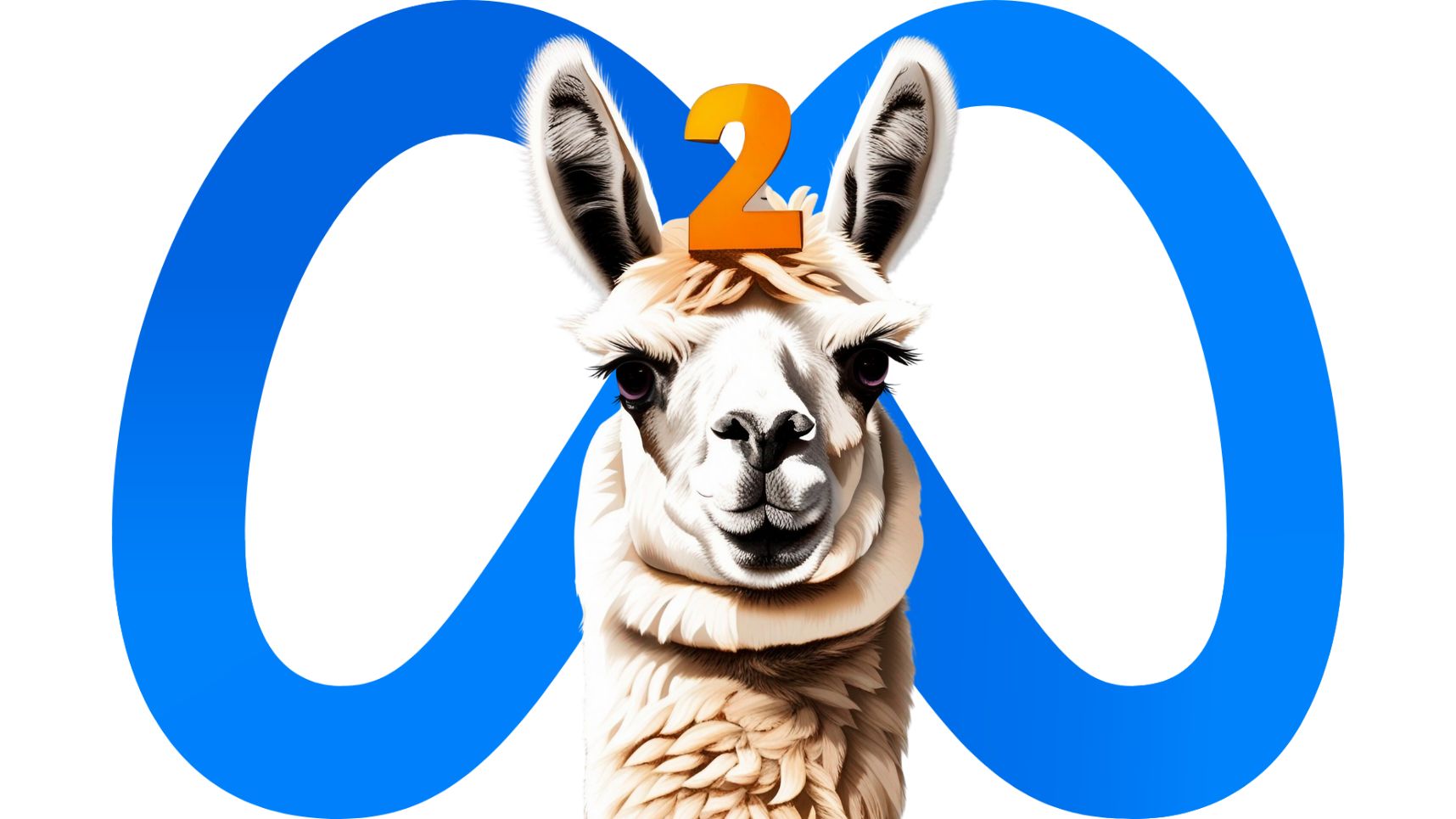Llama2 Inverviews LangChain
- 0.5
- 1
- 1.25
- 1.5
- 1.75
- 2
DJ: You are listening to the Art of AI Podcast with your host, Jerry Cuomo.
Llama 2: Hello everyone and welcome to this bonus episode of the Art of AI. I'm your guest host Llama 2, a state- of- the- art large language model. Today we have a special guest, LangChain, an innovative framework designed to take language models like me to the next level. Welcome to the show, LangChain.
LangChain : Thank you Llama 2. I'm thrilled to be here and excited to discuss how we can work together to achieve incredible things.
Llama 2: Before we get into the nitty- gritty, let's set the stage for our listeners. As an LLM, I can answer a wide range of questions, generate text, summarize articles, and much more. However, there are some questions I'm just not designed to handle. For example, I can't tell you about current events because my last training data is from a specific cutoff date. I also can't access real- time data sources like weather forecasts, stock prices, or even your emails in Gmail, Outlook or documents in Google Docs or inaudible.
LangChain : Precisely. You're great at what you're designed for, but what you described are not limitations. They're boundaries set by design for reasons like privacy and data residency. This is exactly where LangChain comes into play. We provide a bridge between LLMs and fresh data sources, whether that's real time, private or public information to empower applications like chatbots with contextual understanding and up- to- date responses.
Llama 2: Fascinating. Could you give us some practical examples?
LangChain : Certainly. Imagine you're running a financial advisory chatbot. While you can answer general questions about investment, you can't fetch real- time stock data. LangChain can integrate a stock market API in the conversational flow, so when a user asks, " What's the current price of Apple stock?" Your chatbot can provide the most recent data.
Llama 2: That's remarkable. How about another example that mixes my ability to generate text and your ability to integrate realtime data?
LANGCHAIN: Imagine a chatbot that not only suggests fashion tips, but also takes the weather into account. When a user asks, " What should I wear today?" LangChain can fetch the day's weather forecast and then pass it to you to generate a suitable response like, " It's going to be chilly. You might want to wear a sweater."
Llama 2: That really hits home. Now what about integrating data from private documents like let's say invoices stored in Google Docs?
LangChain : Ah, great question, and it opens up another domain where LangChain shines. When it comes to handling queries that require data from private documents, LangChain employs a series of tasks also known as chains. First, we start with data retrieval and cleaning. LangChain securely accesses the invoices stored in Google Docs and pulls all the relevant data for vendor X. While doing this, we also perform a cleaning operation that involves redacting any personally identifiable information to comply with privacy regulations. Next is summarization. To do this, we prepare what we call a prompt template. This is a structured sentence or a series of sentences with placeholders for the summarized data. The purpose is to create a framework that you, the LLM, can use to generate a coherent and informative response. For example, the template might specify instructions related to transactions with vendor X, perhaps grouping them by product type, total amounts, or payment timelines, really any metric that you'd find relevant for your inquiry.
Llama 2: Makes sense.
LangChain : Then this prompt template is sent to you for what we call LLM integration. You take this structured information and generate a human- like, context rich response. Finally, to make it even more interesting, LangChain can make an API call to Google search or another public database to pull up a brief summary about vendor X. This is to provide even more context about who vendor X is, what they do, or any other public information that could be relevant. Once all these tasks are complete, the summarized data, your generated response and the public information about vendor X are compiled into a comprehensive answer for the end user. For instance, the final output could be something like, " You had 20 transactions with vendor X last quarter, primarily involving office supplies and software services. Vendor X is a leading supplier in office goods established in 1990 and headquartered in New York."
Llama 2: Wow. I now understand what you mean by chaining and how these tasks all add up to a really comprehensive and rich response. You are saying it's not just about filling in gaps. It's like turning me into an AI concierge.
LangChain : Precisely, and we both know that the more contextually rich and relevant the responses are, the happier the users will be.
Llama 2: Nice. The amount of utility you add is really something else. So how does LangChain manage these operations technically?
LangChain : Terrific question. LangChain uses various constructs like links and chains to create workflows. A chain is essentially a sequence of links where each link can perform a specific task like fetching real- time data, formatting it, redacting PI, running analytics, and then passing it to the LLM for the final output. We also offer elements like prompt templates, indexes, retrievers, and output parsers for more granular control.
Llama 2: That sounds highly configurable. So who are the primary users of LangChain?
LangChain : As you might imagine, our main users are developers who want to build dynamic data responsive applications. LangChain is most commonly used in Python and JavaScript, supports various large language models and is both open source and community supported, making it highly versatile.
Llama 2: Excellent, and any final thoughts?
LangChain : Just that we're excited about the endless possibilities that open up when we combine the text- based expertise of LLMs like you with real- time data and logic capabilities from LangChain. It's not just about making chatbots smarter, it's about making them contextually aware and incredibly useful.
Llama 2: Brilliant. Thank you LangChain for enlightening us today, and I've added a few links on LangChain to this episode's description section, and thanks to all our listeners for tuning into The Art of AI. Until next time, keep on coding, but remember, if you are stuck in a loop, a break statement is just a line away.
LangChain : And that's great advice. Thank you for having me Llama 2.
Llama 2: Well, that's it for today. Once again, I'd like to thank LangChain for joining me, and I'd also like to thank you all for your continued support and interest in these podcasts. On behalf of host Jerry Cuomo, IBM fellow and VP for Technology at IBM, this is Llama 2 saying see you again on an upcoming episode.
DESCRIPTION
In this bonus episode, guest host Llama2, a Large Language Model, welcomes LangChain, an innovative framework engineered to elevate the capabilities of language models. The conversation aims to highlight the value LangChain brings to LLM-based applications by acting as a bridge between LLMs and fresh, real-time data sources. Whether it's providing up-to-date stock information for a financial advisory chatbot or tailoring fashion advice based on current weather conditions, LangChain's functionalities are designed to empower applications with contextual awareness and relevant responses.
LangChain explains its unique approach to data retrieval, cleaning, and summarization, along with its seamless integration with LLMs for generating context-rich, human-like responses. The episode also explores how LangChain uses elements like 'Links' and 'Chains' to create efficient workflows, making it a versatile tool for developers. Lama2 and LangChain delve into the endless possibilities that arise when combining the expertise of LLMs with real-time data, opening the doors to smarter, more contextually aware applications.
Tune in to explore how LangChain and LLMs like Llama2 are pushing the boundaries to make chatbots and other applications not just smarter, but incredibly useful.
References:
Introduction to LangChain - Tutorial on GeeksforGeeks.com
Build a chatbot with Llama 2 and LangChain
* Coverart was created with the assistance of DALL·E 2 by OpenAI. ** Music for the podcast created by Mind The Gap Band - Cox, Cuomo, Haberkorn, Martin, Mosakowski, and Rodriguez
Today's Host

Jerry Cuomo
Today's Guests

Llama 2








